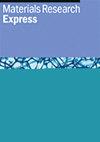Effect of tempering process on the mechanical properties and corrosion resistance of E690 marine steel
IF 2.2
4区 材料科学
Q3 MATERIALS SCIENCE, MULTIDISCIPLINARY
引用次数: 0
Abstract
To accurately replicate actual production and save production costs, this study examines the influence of the tempering process on the structure, mechanical properties, and corrosion resistance of E690 marine steel. Various techniques were employed to evaluate its properties, behavior, and performance, including metallurgical microscopy, scanning electron microscopy, transmission electron microscopy, electron backscatter diffraction, impact experiments, tensile tests, and electrochemical corrosion tests. The results indicate that as the tempering temperature increases, the tempering degree of the tempered martensite structure improves, the martensite strip coarsens, the size of the precipitated carbide increases, and the proportion of large-angle grain boundaries decreases. Consequently, the tensile strength and yield strength initially increase and then decrease, while the impact toughness and elongation gradually improve. At a tempering temperature of 600 °C, the steel exhibits the best overall mechanical properties, with a tensile strength of 729 MPa, yield strength of 649 MPa, and elongation of 18%. Furthermore, at a tempering temperature of 550 °C, the test steel shows an optimal corrosion resistance, with a corrosion rate of 0.03233 mm y−1 and an open-circuit potential of −0.36 V.回火工艺对 E690 船用钢机械性能和耐腐蚀性的影响
为了精确复制实际生产并节约生产成本,本研究探讨了回火工艺对 E690 船用钢的结构、机械性能和耐腐蚀性能的影响。研究采用了多种技术来评估其特性、行为和性能,包括金相显微镜、扫描电子显微镜、透射电子显微镜、电子反向散射衍射、冲击实验、拉伸试验和电化学腐蚀试验。结果表明,随着回火温度的升高,回火马氏体结构的回火程度提高,马氏体条粗化,析出的碳化物尺寸增大,大角度晶界比例降低。因此,抗拉强度和屈服强度先升高后降低,而冲击韧性和伸长率则逐渐提高。回火温度为 600 ℃ 时,钢的整体机械性能最佳,抗拉强度为 729 兆帕,屈服强度为 649 兆帕,伸长率为 18%。此外,在 550 °C 的回火温度下,试验钢材显示出最佳的耐腐蚀性,腐蚀速率为 0.03233 mm y-1,开路电位为 -0.36 V。
本文章由计算机程序翻译,如有差异,请以英文原文为准。
求助全文
约1分钟内获得全文
求助全文
来源期刊

Materials Research Express
MATERIALS SCIENCE, MULTIDISCIPLINARY-
CiteScore
4.50
自引率
4.30%
发文量
640
审稿时长
12 weeks
期刊介绍:
A broad, rapid peer-review journal publishing new experimental and theoretical research on the design, fabrication, properties and applications of all classes of materials.
 求助内容:
求助内容: 应助结果提醒方式:
应助结果提醒方式:


